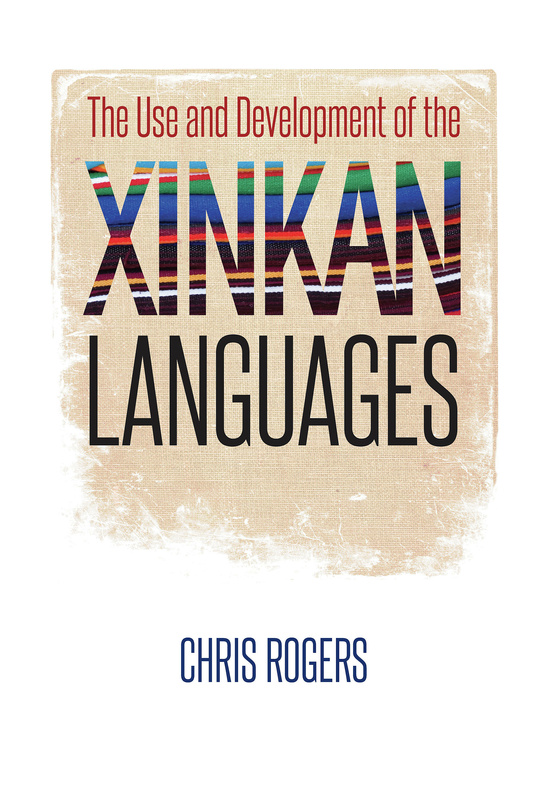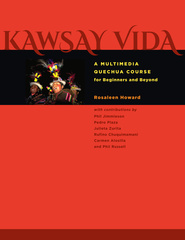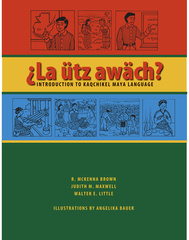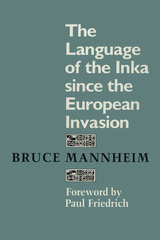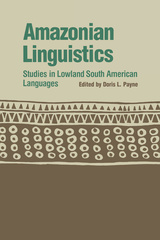Our shopping cart is currently down. To place an order, please contact our distributor, UTP Distribution, directly at utpbooks@utpress.utoronto.ca.
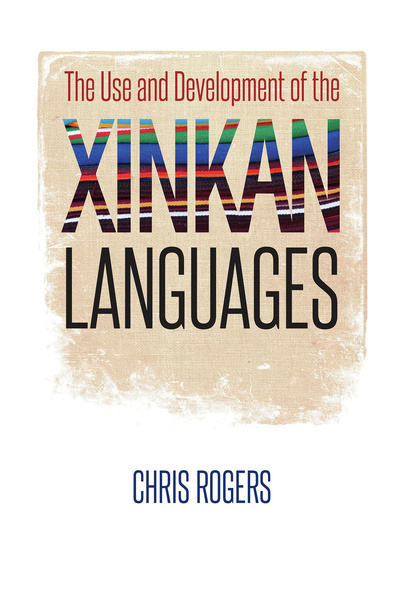
Once spoken only in Santa Rosa Department, Guatemala, the Xinkan language family is unique within Mesoamerica, comprising four closely related languages that are unrelated to any of the other language groups used within the region. Descriptions of Xinkan date to 1770 but are typically only sketches or partial word lists. Not even the community of indigenous people who identify as Xinka today—the last speakers—have had access to a reliable descriptive source on their ancestral tongue. Preserving this endangered communication system in accurate, thorough detail, The Use and Development of the Xinkan Languages presents a historical framework, internal classifications, and both synchronic and diachronic descriptions, incorporating all elements of grammar based on extensive unpublished data collected in the 1970s by Lyle Campbell and Terrence Kaufman.
This valuable contribution is enhanced by author Chris Rogers’s emphasis on contextualizing the findings. Introducing the languages, Rogers presents important information regarding the social and cultural milieu of the speakers. He also traces a phonological reconstruction of Proto-Xinkan and reconstructs historical morphology and syntax. These revelations are of particular interest because the development of Xinka and the many aspects of Xinka morphosyntax have not been well understood. A sample text, “Na Mulha Uy,” is included as well. Solving numerous complex, centuries-old linguistic puzzles, The Use and Development of the Xinkan Languages unlocks new potential for the rediscovery of a rich cultural history.
This grammar/history is a very important addition to the literature. There is nothing like it. Given the extremely endangered state of the Xinkan languages, and because the author had access to important unpublished field notes on the languages, this book is of great significance.
CHRIS ROGERS is a visiting professor of linguistics at Brigham Young University. He has served as Director of the Center for American Indian Languages at the University of Utah and has conducted extensive linguistic fieldwork in Mexico, Guatemala, Argentina, Peru, Brazil, and Venezuela.
This book is a part of the Recovering Languages and Literacies of the Americas publication initiative, funded by a grant from the Andrew W. Mellon Foundation.
- LIST OF FIGURES
- LIST OF TABLES
- ACKNOWLEDGMENTS
- LIST OF ABBREVIATIONS
- CHAPTER 1. INTRODUCTION TO THE LANGUAGES AND THEIR SPEAKERS
- 1.1. THE XINKAN LINGUISTIC CONTEXT
- 1.2. PAST WORK WITH THE XINKAN LANGUAGES
- 1.3. THE XINKAN SOCIAL AND CULTURAL CONTEXT
- 1.4. ORGANIZATION OF THE GRAMMAR
- 1.4.1. Description of data sources
- PART I. THE USE OF THE XINKAN LANGUAGES: SYNCHRONIC GRAMMAR
- CHAPTER 2. PHONOLOGY
- 2.1. VOWELS
- 2.1.1. Vowel length
- 2.1.2. Vowel Harmony
- 2.2. CONSONANTS
- 2.2.1. Guazacapán
- 2.2.2. Chiquimulilla
- 2.2.3. Jumaytepeque
- 2.2.4. Yupiltepeque
- 2.2.5. Consonant distribution
- 2.3. PHONOLOGICAL ALTERNATIONS
- 2.3.1. Glottalization
- 2.3.2. Voicing of stop following a nasal
- 2.3.3. Nasal assimilation
- 2.3.4. Lenition to [h]
- 2.3.5. Vowel raising
- 2.3.6. Glottal-stop epenthesis
- 2.3.7. Consonant dissimilation
- 2.3.8. Guazacapan Consonant deletion
- 2.4. SYLLABLE STRUCTURE
- 2.5. STRESS
- 2.6. ORTHOGRAPHY
- 2.1. VOWELS
- CHAPTER 3. MORPHOLOGY
- 3.1. NOUNS
- 3.1.1. Possession
- 3.1.2. Number
- 3.1.3. Diminutive constructions
- 3.2. ADJECTIVES
- 3.2.1. Adjectives as modifiers of nouns
- 3.2.2. Adjectives modified by ki ‘very’
- 3.2.3. Comparative and Superlative Constructions
- 3.3. DETERMINERS
- 3.3.1. Articles
- 3.3.2. Demonstratives
- 3.3.3. Quantifiers
- 3.4. NOUN PHRASES
- 3.5. PRONOUNS
- 3.5.1. Independent personal pronouns
- 3.5.2. Dependent pronouns
- 3.6. VERBS
- 3.6.1. Verb classes and transitivity
- 3.6.2. Subject agreement
- 3.6.3. Grammatical aspect
- 3.6.4. Imperative form
- 3.6.5. Constrastive construction in Guazacpán
- 3.6.6. Tense
- 3.6.7. Grammatical Voice
- 3.6.8. Mood and modality
- 3.7. RELATIONAL NOUNS
- 3.8. VERBAL PARTICLES
- 3.8.1. p’e/p’eh directional
- 3.8.2. wa optative
- 3.8.3. Negative imperative particle in Guazacapán
- 3.8.4. Verbs borrowed from Spanish
- 3.9. NOMINAL PARTICLES
- 3.9.1. kumu ‘as’
- 3.9.2. ti’i- / t’i- direct object
- 3.9.3. ‘i- reflexive in Guazacapán
- 3.9.4. ki’
- 3.9.5. kiki-/kih
- 3.10. QUESTION WORDS
- 3.11. CONJUNCTIONS
- 3.12. DERIVATIONAL MORPHOLOGY
- 3.12.1. Noun derivations
- 3.12.2. Adjective derivations
- 3.12.3. Verbal derivation
- 3.1. NOUNS
- CHAPTER 4. SYNTAX
- 4.1. SYNTACTIC ALIGNMENT
- 4.1.1. Grammatical relations
- 4.1.2. Semantic relations
- 4.1.3. Antipassive and verb agreement
- 4.2. SIMPLE SENTENCE FORMATION
- 4.2.1. Sentences with verbs
- 4.2.2. Copular sentences
- 4.3. QUESTION FORMATION
- 4.3.1. Yes/no questions
- 4.3.2. Content questions (wh-questions)
- 4.4. PREPOSING
- 4.5. NEGATION
- 4.6. COMPLEX SENTENCE FORMATION
- 4.6.1. Conjoined clauses
- 4.6.2. Serial verb constructions
- 4.6.3. Relative clauses
- 4.6.4. Complement clauses
- 4.6.5. Adverbial clauses
- 4.6.6. Conditional clauses
- 4.1. SYNTACTIC ALIGNMENT
- CHAPTER 5. TEXT
- 5.1. NA MULHA UY
- CHAPTER 2. PHONOLOGY
- PART II THE DEVELOPMENT OF THE XINKAN LANGUAGES: DIACHRONIC GRAMMAR
- CHAPTER 6. HISTORICAL PHONOLOGY
- 6.1. INTRODUCTION
- 6.2. COMMENTARY ON THE RECONSTRUCTION OF PROTO-XINKAN
- 6.3. PROTO-XINKAN PHONOLOGICAL RECONSTRUCTION
- 6.3.1Consonants
- 6.3.2. Vowel changes
- 6.4. SUMMARY OF SOUND CHANGES
- 6.5. SUBGROUPING
- 6.6. CONCLUSION
- CHAPTER 7. HISTORICAL MORPHOLOGY
- 7.1. PRONOUNS AND PRONOMINAL AFFIXES
- 7.1.1. Pronouns
- 7.1.2. Pronominal affixes
- 7.2. BOUND MORPHOLOGY
- 7.1. PRONOUNS AND PRONOMINAL AFFIXES
- CHAPTER 8. HISTORICAL SYNTAX
- 8.1OVERVIEW OF SYNTACTIC RECONSTRUCTION
- 8.2. XINKAN SYNTACTIC RECONSTRUCTION
- 8.2.1. Syntactic alignment
- 8.2.2. Verb classes
- 8.2.3. Word order
- 8.2.4. Nominal syntax reconstruction
- CHAPTER 9. LOOKING FORWARD
- CHAPTER 6. HISTORICAL PHONOLOGY
- APPENDIX
- REGULAR VERB CONJUGATION
- IRREGULAR VERB CONJUGATION
- BIBLIOGRAPHY
- TYPOLOGICAL INDEX
- TOPICAL INDEX
- NOTES

